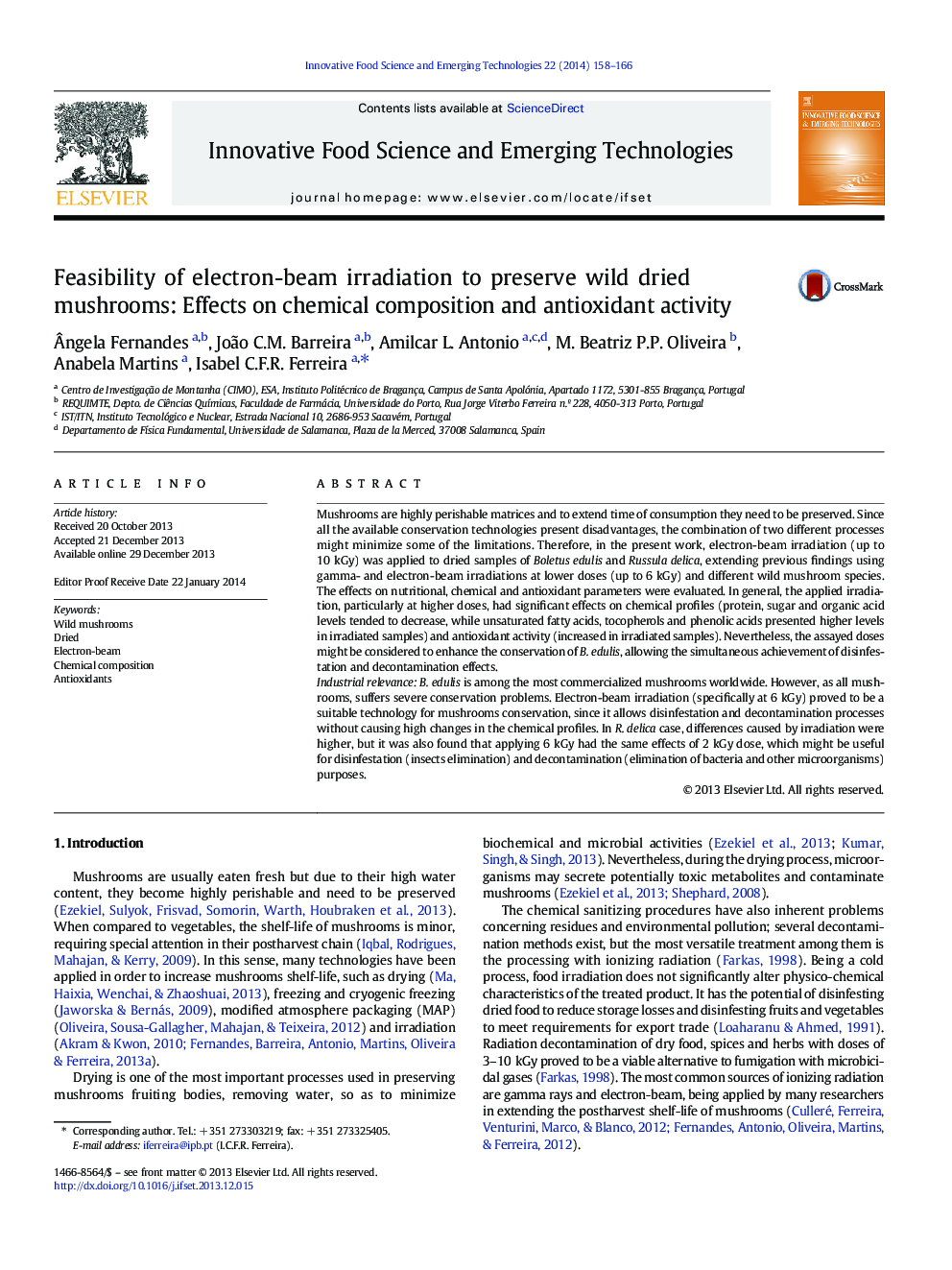| Article ID | Journal | Published Year | Pages | File Type |
|---|---|---|---|---|
| 2086632 | Innovative Food Science & Emerging Technologies | 2014 | 9 Pages |
•Electron-beam irradiation at 10 kGy influenced mushrooms nutritional parameters.•E-beam irradiation at 6 kGy was suitable for Boletus edulis conservation.•Russula delica was more susceptible to irradiation effects than B. edulis.•E-beam protected antioxidant activity, tocopherols and fatty acids.•E-beam, at established doses, is a suitable technology for mushrooms conservation.
Mushrooms are highly perishable matrices and to extend time of consumption they need to be preserved. Since all the available conservation technologies present disadvantages, the combination of two different processes might minimize some of the limitations. Therefore, in the present work, electron-beam irradiation (up to 10 kGy) was applied to dried samples of Boletus edulis and Russula delica, extending previous findings using gamma- and electron-beam irradiations at lower doses (up to 6 kGy) and different wild mushroom species. The effects on nutritional, chemical and antioxidant parameters were evaluated. In general, the applied irradiation, particularly at higher doses, had significant effects on chemical profiles (protein, sugar and organic acid levels tended to decrease, while unsaturated fatty acids, tocopherols and phenolic acids presented higher levels in irradiated samples) and antioxidant activity (increased in irradiated samples). Nevertheless, the assayed doses might be considered to enhance the conservation of B. edulis, allowing the simultaneous achievement of disinfestation and decontamination effects.Industrial relevanceB. edulis is among the most commercialized mushrooms worldwide. However, as all mushrooms, suffers severe conservation problems. Electron-beam irradiation (specifically at 6 kGy) proved to be a suitable technology for mushrooms conservation, since it allows disinfestation and decontamination processes without causing high changes in the chemical profiles. In R. delica case, differences caused by irradiation were higher, but it was also found that applying 6 kGy had the same effects of 2 kGy dose, which might be useful for disinfestation (insects elimination) and decontamination (elimination of bacteria and other microorganisms) purposes.
